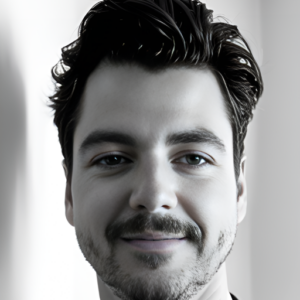Our Creative Strategists are breaking down what’s happening, why it matters, and how it could shape the future of creative work and content marketing.
Understanding the Power Players: Getty Images and Shutterstock
Getty Images and Shutterstock have long been titans of stock media. Whether you’ve needed high-quality images, videos, or custom graphics, chances are you’ve crossed paths with one or both platforms. As a consumer of content, you most definitely have viewed their images - more times than you know.
The Birth of a $3.7 Billion Content Giant
Getty and Shutterstock each dominated different corners of the stock media market. But together, they form a new juggernaut with enhanced capabilities to serve both creatives and brands. But along with this newfound strength comes scrutiny. Questions around monopolistic power loom large. Beyond that, the company faces another major challenge: how to thrive in an AI-driven future. It seems this merger is their answer, and it certainly makes them stronger, but how will they combat AI? Let’s dive in.
The Existential Challenge: AI’s Impact on Content Libraries
AI is changing the creative game, and it’s a serious threat to traditional stock media providers. Tools like generative AI models can now create entirely new visuals by scraping the web for inspiration — raising concerns about intellectual property and the longevity of non-generative content libraries.
Siloing Content for AI Protection
Getty and Shutterstock may look to protect their libraries by restricting access to AI models. If they can effectively shield their assets from data-mining algorithms, they could retain control over their value and prevent unauthorized use.
On the flip side, the merger offers these powerhouses an opportunity to build proprietary generative AI capabilities. With access to such vast libraries, the companies could potentially develop industry-leading models that outperform competitors. By investing in their own AI tech, Getty and Shutterstock could provide cutting-edge tools for creatives looking to generate high-quality content on demand.
Implications for Creative Professionals and Content Creation
What does this mean for creatives and marketers? In short, both opportunity and disruption. The merger and rise of AI are set to shake up how content is produced, sourced, and distributed. Like it or not, it’s time for creatives to embrace AI.
The Changing Production Workflow
Imagine cutting pre-production and on-site shoots entirely. While that may be the future, the right now is that AI-generated content can streamline these processes by allowing creatives to produce visuals tailored to their needs without the traditional costs and logistics. Current tools aren’t perfect yet, but they’re rapidly improving.
Democratization of Creativity
This shift could also be a boon for smaller brands. Just as smartphones democratized filmmaking, generative AI could allow any business to create professional-grade visuals quickly and affordably. Need a product photoshoot but lack the budget? AI might soon be able to handle that.
The Threat to Traditional Content Production
However, not everyone benefits. Large production houses, ad agencies, and photographers may face new competition as AI tech reduces the demand for traditional services. And one thing is for certain across the entire lifecycle of content creation: organizations and brands that don’t adapt risk being left behind.
What Brands Need to Know and Do Next
For brands, the future of creative content is both exciting and daunting. The key to staying competitive is to embrace AI — but in the right way.
The Importance of Partnering with AI-Savvy Agencies
If your brand doesn’t have in-house AI expertise, now is the time to collaborate with an agency that does. Agencies on the cutting edge are already researching the best tools and leveraging AI to deliver innovative creative solutions. Having AI-empowered creative partners can help ensure you’re not only keeping up but leading the charge.
Navigating Uncertainty and Staying Competitive
The rapid pace of technological change can be overwhelming. Brands need to be strategic — stay informed about AI advancements, invest in scalable solutions, and continuously optimize creative strategies to remain ahead of the curve.
Advice for Creatives in the Age of AI
If you’re a creative professional, you might be wondering: where do I fit in this new AI-driven world? The good news is that there’s still plenty of room for human creativity. But you’ll need to adapt.
Embracing AI Without Fear
Many writers, designers, and photographers initially feared AI would replace them. But those who’ve leaned in and experimented with the technology have discovered it can be a powerful tool rather than a threat. AI can enhance creativity, not eliminate it — if used strategically.
Iterative Creative Processes
AI makes it easier than ever to create multiple iterations of an ad or campaign. Testing, learning, and optimizing creative output at scale is now essential. Developing a robust process for rapid experimentation can set your team apart.
Mastering AI Tools Over Time
There’s a learning curve to using AI effectively. It’s not something you master overnight with a quick training session. Creatives need to live with these tools in their workflows and continuously refine how they use them to enhance their work.
The Future of AI and Creativity: Challenges and Opportunities
We’re at an interesting point in AI development. After explosive growth between 2022 and 2024, things have plateaued slightly. Does that mean innovation is slowing, or is the next big leap just around the corner? Only time will tell.
Philosophically, AI presents both risks and opportunities. While it learns from historical patterns, it also has the potential to help us break free from repetitive creative tropes. If harnessed correctly, AI could push creative boundaries further than ever before.
Bottom line: The Getty and Shutterstock merger marks a pivotal moment for the creative world. It highlights both the opportunities and challenges posed by AI. For brands and creatives alike, the key to success is adaptability. Stay informed, embrace innovation, and don’t be afraid to experiment with new technologies.

